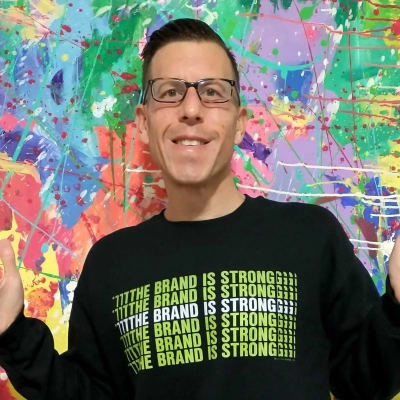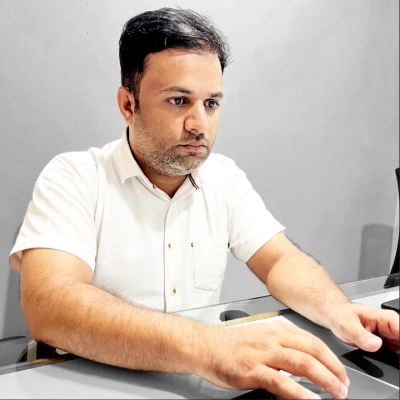9 Unconventional Marketing Budget Allocations that Yielded Strong Returns
Marketing budgets can make or break a company's success, but conventional wisdom doesn't always lead to the best returns. This article explores unconventional budget allocations that have yielded strong results, drawing on insights from industry experts. From optimizing conversion rates to hiring brand poets, these strategies challenge traditional thinking and offer fresh perspectives on maximizing marketing impact.
- Optimize Conversion Rates for Compounding Effects
- Invest Early in Emerging Technologies
- Hire a Brand Poet for Emotional Connection
- Test Multiple Channels and Refine Allocation
- Build Trust Through Personal Client Relationships
- Balance Data-Driven Spend with Experimental Initiatives
- Sponsor Community Events for Local Impact
- Allocate Budget Based on KPIs and ROI
- Prove Your Value as a Temporary Employee
Optimize Conversion Rates for Compounding Effects
I moved about 10 percent of the ad budget into conversion rate optimization instead of pouring it all into clicks. That change lifted revenue by around 20 percent in one quarter without raising spend. So fixing the funnel made more money than just chasing more impressions.
One campaign really showed it. The form completion rate went from 18 percent to 24 percent after I cut two fields and matched the headline with the ad copy. Because of that, CAC dropped by almost a third since more people finished the form instead of quitting halfway. The gains gave me room to put more into SEO, which built steady traffic that kept working even after ads stopped.
The unusual thing was how I treated budget. Most CMOs just throw more money at ads, but moving a piece into CRO created compounding effects over time. So I test fast, push the small wins live, and avoid dragging results out for months. The trap is getting stuck over-optimizing one funnel while forgetting new traffic sources, so I balance CRO work with ongoing investment in growth.

Invest Early in Emerging Technologies
We allocate 30% of our marketing budget to "learning experiments" - small tests of emerging platforms or technologies that traditional ROI calculations can't justify yet. Our most surprising return came from investing in AI-powered voice search optimization before it was mainstream. While competitors focused on traditional SEO, we optimized for conversational queries. That $3,000 monthly investment generated over $180,000 in new business within eight months because we dominated voice search results in our niche. The lesson: sometimes the highest ROI comes from being early to trends others consider too risky.
Hire a Brand Poet for Emotional Connection
At Eyda, I approach marketing budget allocation as a curator rather than a controller. Our focus isn't simply on impressions, but on creating an imprint that stays with people. Every dollar must serve our brand story, investing in resonance over reach and depth over breadth. Performance metrics matter, of course, but only when they reflect emotional connection.
The most unconventional investment that surprised us with strong returns? Poetry.
We brought on a part-time brand poet, not just another copywriter or strategist, but someone who thinks in metaphor and crafts language with genuine cadence. Their work transformed our carousel captions, product descriptions, and even our internal culture documents. The results were remarkable: our engagement tripled, bounce rates declined significantly, and our community began quoting our content back to us.
This confirmed what we've always believed: when your brand communicates authentically, people listen. And when your budget honors emotional connection, that emotion returns as loyalty, love, and lasting brand legacy.

Test Multiple Channels and Refine Allocation
The first step in properly planning a marketing budget is to learn. Learn about your target market: where are they spending their time both online and offline, what kind of media are they consuming and in what formats, and what do they care about when it comes to your products/services. From there, you can get an idea of how to reach them effectively. At that point, you want to find the right combination of channels where you can have the greatest impact while also being able to deliver your message across multiple touchpoints.
I generally begin any campaign with a wider range of channels for allocation because no matter how much insight and research we have into our target market and marketing channels, we'll never know the reality until we test. Once a campaign is out in the real world, we can start gathering data and fine-tune our allocation by spending more budget in areas where we see success and removing underperforming channels in favor of new ones to test. This approach allows us to improve over time and ensure that we are constantly optimizing for the best results.
Unconventional thinking has always been a part of my process. During my ad agency days, we took on a chain of dry cleaners as a client. Knowing that people tend to use dry cleaners that are convenient to them from a location perspective, we identified pizza parlors located close to their locations and partnered with them to allow us to stick flyers on top of their boxes. Unlike TV, radio, or even the Internet, this really allowed us to drill down to tightly geo-fenced areas of potential customers, and we played up sauce stains in the messaging to make the natural connection. The flyers were cheap to produce, and the price point to work with the pizza parlors was low because they were happy to get some extra money for doing next to nothing. The cleaners saw an over 20% increase in items serviced in the three months following the effort.

Build Trust Through Personal Client Relationships
I don't have a "CMO" or a corporate marketing budget. My approach is simple: I put my money back into the business in ways that build trust. The most unconventional "investment" I ever made was a simple, old-fashioned one: I spent my time and a little money on my past clients, not new ones.
The process is straightforward. After we complete a roof, I send a card to the homeowner thanking them for their business. I'll then tell them that I'll be back every year for the next five years to do a free roof check-up. This isn't just about sales. It's a way of showing the client that I stand by my work and that I'm in it for the long haul.
The outcome of that was huge. My "unconventional investment" in a simple, hands-on relationship led to a lot of trust and a lot of referrals. My clients were happy with the work, but they were a lot happier with the personal commitment. The "strong returns" were a direct result of a simple, human connection. The best leads I get are the ones who come from a happy client.
My advice to other business owners is to stop looking for a corporate "solution" to your problems. The best way to "allocate a marketing budget" is to be a person who is committed to a simple, hands-on solution. The best "investment" you can make is in your reputation. That's the only kind of investment that will ever truly pay you back.
Balance Data-Driven Spend with Experimental Initiatives
There are always opposing viewpoints on marketing-budget allocations, and yet to me, the discernment requires a balance of science and clairvoyance. Under data-driven guidance comes core spend: performance marketing, content, and brand campaigns, channels proven with returns. Behind such data-driven logic, I also set aside a percentage of the marketing budget for a little bit of experimentation. This maintains efficiency while still providing agility in order to test new opportunities. Aside from simple ROI calculations, I also consider long-term brand equity, audience engagement, and pipeline alignment with organizational objectives. One atypical investment that shot for the stars was in customer community-building initiatives. Instead of pouring everything into lead generation, we nurtured this dynamic customer community through their own events, peer-to-peer discussions, and exclusive content.

Sponsor Community Events for Local Impact
When setting marketing budgets, I'm methodical about tying each dollar to concrete outcomes--nothing gets spent just because it's trendy. One unconventional move that paid off for us was sponsoring community clean-up and revitalization days, using those events as content for our social channels. Not only did it lift our local profile, but it also led to direct referrals from neighbors who saw us as committed partners, not just another real estate brand.

Allocate Budget Based on KPIs and ROI
At FavouriteTable, I've figured out how to allocate our marketing budget based on our KPIs and the performance of past campaigns. We begin with clear objectives and investment levels, then we divide across channels (e.g., content marketing, paid search, partner marketing) according to historical performance and forecasted ROI. We measure the return of every dollar spent and are continually testing and adjusting in real-time to take resources away from underperforming areas and double down on the campaigns that work best for us. An important part of this is our investment in data infrastructure and analytics stack. We now have a system in place that is designed for monitoring lead sources, conversions, and customer actions on our platform in order to get one clear picture of our marketing effectiveness.

Prove Your Value as a Temporary Employee
My business often hires temporary staff for our busiest seasons. The traditional approach for many people is to simply do the job and hope for a permanent position. However, this is a passive strategy. The most valuable employees, the ones we retain, don't just do their work. They prove they're indispensable.
The single most valuable tip I can offer is to stop acting like a seasonal employee and start behaving like a full-time operations director. From an operations standpoint, your job isn't just to handle customer problems as they arise. It's to identify recurring issues and resolve them. You need to become an expert on the pain points in the system. From a marketing perspective, this is your opportunity to market yourself as an essential asset. You don't just manage the day-to-day operations. You improve the entire operation.
The process is straightforward but requires a different mindset. First, pay attention to what goes wrong or what takes too long. Is it a specific process? A question that frequently arises? Second, take the initiative to find a solution. It could be as simple as creating a brief guide for your team or suggesting an alternative way to handle a common issue. Third, present that solution to your manager. You're not complaining. You're coming to the table with a new process.
The impact of this approach is immediate. You've transformed yourself from a temporary expense into a permanent asset. The company doesn't just see someone who can answer calls; they see someone who is invested in making the entire system more efficient. When a full-time position becomes available, you've already demonstrated your worth. You are no longer just a candidate; you are the solution to one of their problems.
What I learned is that the best way to secure a permanent job isn't about simply doing what you're told. It's about building a case for your own value. My advice is to stop being just a worker. Instead, identify a problem in the business and fix it. The people we retain aren't just proficient at their job; they're the individuals who make our business run more effectively.




